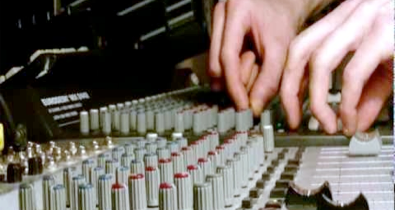
To sign up email workshops@thenoiseupstairs.com or talk to Anton or Rodrigo (or Richard!).
Workshop dates will be March 20th and 27th with the performance happening April 14th.
‘No-input’ describes the state of an audio mixer fed back into itself. The name is slightly misleading however: there is input to the mixer – the output.
Audio mixers have been in use for decades, although the desirability of feedback as a creative resource is only really a recent phenomena. Electronic music could be very different if mixers were realised as instruments, back in the early days of music technology.
Sound can be generated in any passive audio circuit featuring an amplifier – via any supporting medium (air or wires for example). When the output of an amplified circuit is fed back fully or partially, with sufficient amplification, oscillation will occur.
Precisely regulated feedback is the fundamental element of analogue sine wave oscillators – typically found in synthesisers and the like.
When an analogue feedback circuit such as an oscillator is switched on, it’s initial output is merely background noise produced by components – but within a very small space of time, the noise is amplified, filtered and subsequently characterised by any components or resonances in the signal path (for example room shapes in acoustic feedback, or frequency filters in analogue oscillators).
With more obstacles and characterising elements in the signal path of a feedback loop, far beyond simple sine waves can be produced. As the amplification of a loop is increased, the sound becomes more unpredictable and contoured by the equipment in use.
An audio mixer with anything from basic EQ and sufficient outputs/channels provides a diverse palette for experimentation with feedback. Using multiple channels, different configurations of inputs/outputs and possibly external effects can further extend the range of obtainable timbres.
Typically, auxillary sends, bus outputs and/or master outputs are plugged back into line-level channel inputs – then the relevant level/gain is increased until feedback occurs.
Although there are common traits of feedback, every brand and model of mixer exhibits it’s own unique characteristics. During the course of this workshop, you will understand how to deal with your mixer as an instrument and begin to utilise it’s characteristics as ‘musical’ vocabulary. Ultimately each participant of the workshop will make a unique contribution to the resulting ensemble. The workshop will culminate in a calculated performance, albeit with space for individual improvisation and exhibition of each mixer’s capabilities, at April’s Noise Upstairs event in Manchester.
In order to participate, you will need an audio mixer – preferably a small device with a couple of aux sends, such as the Soundcraft Folio, Behringer Eurorack or Mackie VLZ series.
Also you will need a number of short patch leads in order to connect the mixer to itself, in addition to a longer jack or XLR lead for connecting your mixer to the speakers/PA system. However, we can provide both types of lead if you have difficulty bringing them.
Due to the nature of feedback, often the most extreme signal levels and frequency ranges permitted by the mixer’s components are yielded. This may affect the lifespan of certain components and cause a temporary increase of temperature, although no fidelity loss has been reported.
No-input mixer technique is unfortunately not widely documented nor recognised at current. There are few, if any official resources discussing the practise.
Some details of artists and resources are listed below:
Toshimaru Nakamura – http://www.japanimprov.com/tnakamura/ – ‘popularised’ the use of mixer feedback with his minimal style, closed related to the Japanese ‘Onkyokei’ scene.
Marko Ciciliani – http://markociciliani.de/ – Ciciliani has extended the no-input mixer as a ‘concert’ instrument, producing composed scores and improvisations for the instrument in solo and ensemble contexts.
Suggested listening:
Toshimaru Nakamura – No-input Mixing Board (2000)
Keith Rowe and Toshimaru Nakemura – Between (2006)
Marko Ciciliani – 81 Matters in Elemental Order (2008)
Richard Knight – Sleight of NAND (2010)
Richard Knight has been using mixers since a young age, but only realised their potential as expressive instruments within the past few years. During this time he has amassed a formidable collection of audio mixers and investigated their curious musical possibilities. He’s interested in using their potential for improvisation, precisely structured ‘techno’ music and the diverse area between.
For details on these projects, visit:
http://www.youtube.com/user/closedcircuits
http://www.concretemoniker.co.uk
Click here to download leaflet



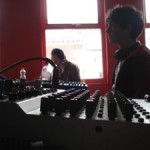
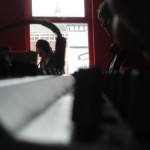
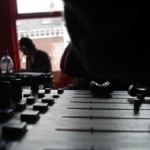
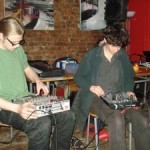
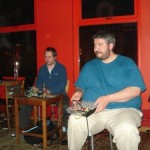
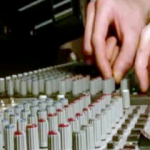
Leave a Reply to Sonia Paço-Rocchia / Feedback Workshop Performance – 14 April 2011 | The Noise Upstairs Cancel reply